We left Kefalonia at 1900 on 28th July and had a really good sail to Punta di Spropoli….
…..on the south eastern tip of the toe of Italy. For the first 24hours we had 11-22kn winds from the NNW which meant we were doing 5-7.5kn. Unfortunately, the wind then died to 2-8kn so we had to motor-sail the rest of the way arriving at 08.35 Italian time on the 30th.
It was the first passage where we had used our Garmin InReach mini to send messages during our trip to let people know we were OK. It was very much a practice run and we got a couple of things wrong but, overall, it works really well and, by the time we come to cross the Atlantic, we should be well practiced.
We were both tired so spent the day snoozing and reading followed by an evening swim before an early meal and bed.
Recently we have also discovered the “Navily” App. Like some other sailing Apps it is generated by sailors putting comments onto already plotted anchorages/marinas etc and by adding new ones. It is very popular and therefore has lots of comments which are very up to date. When we passed through the Straits of Messina going east five years ago we did not realise that there were anchorages all along this stretch of coast – certainly there are none in the Pilot book – and therefore just kept going. It would have been really nice to have stopped at least once. Now that we have much more and better information, our route planning has improved considerably.
So, our next stop was just 2km away – the small town of Vela.
It was quite a strange place in some ways with seemingly little open in the town but lots of people on the beach.
The point is also the southernmost tip of Italy…
….so, we had to go and pose!
One of the things we noticed on this beach, and again in Sicily, is that people leave their chairs, umbrellas and beach toys on the beach overnight and then return to the same spot the following day. Nothing goes missing – it’s the done thing. We also noticed that, unlike in north Italy where topless sunbathing and “budgie smuggler trunks” are de rigeur, in southern Italy and Sicily most of the men wear swimming shorts and the women wear full bikinis or swimsuits.
Although we had only just arrived in Italy and it might have been nice to ease our way west, we were aware that getting the wind and current right through the Straits of Messina is critical – particularly going north. So, in Vela we did the research and found that the following day – leaving at 4am – was actually the best time for the next two weeks. We therefore sailed 7 miles to Straci which, Navily showed, was the best anchorage near to but actually not in the Straits. It was deemed good not only because of the nice sandy bottom but also because there was little, or no, wash from the big ships going into the straits which the anchorages in the Straits themselves get. It also meant we were still protected from the prevailing wind.
Up at 3.45am the following day we motored up into the Straits watching Etna smoking in the dawn light.
We made good progress, had timed it right for the change in current and thought it was all going very well indeed.
We then passed the big ferry port of Villa San Giovanni….
…. and the fun started!
The current kicked in, the boat speeded up to 9kn and Mike described is as being like the “cup and saucers” ride at the fair.
We didn’t actually turn 360 but it was close and it was only Mike’s steering which prevented that happening. It wasn’t one of the renowned Straits whirlpools but it was pretty close! The table had shown that the current strength that day was 1.5kn. The following day it was due to be 3kn and the day after, 5kn. Heaven knows what that would have been like. We are pleased our research paid off.
Anyway, between Punta Prezzo….
…. and Scilla, the current slowed and we were safely through. Unfortunately though, the waves were still quite big and rolling directly on shore at Scilla. It is the second time that this small, pretty town has eluded us as a place to stop.
Whilst the current chart had been accurate, the weather forecast wasn’t! As Scilla wasn’t possible, it had been our intention to keep going west because the forecast had given winds of 2-5kn with a 0.5m swell. The reality was 14-18kn wind and a 1.5m swell. Initially we thought we might head towards Vulcano [in the Aeolian islands] which would have been across rather than into wind and waves, but then Mike thought we could take a look at what the shelter was like behind the nearest headland – off the village of Aquarone. Although not perfect, as there was a bit of roll, it was really quite good.
Another early start the following morning saw us passing between Stromboli and Etna….
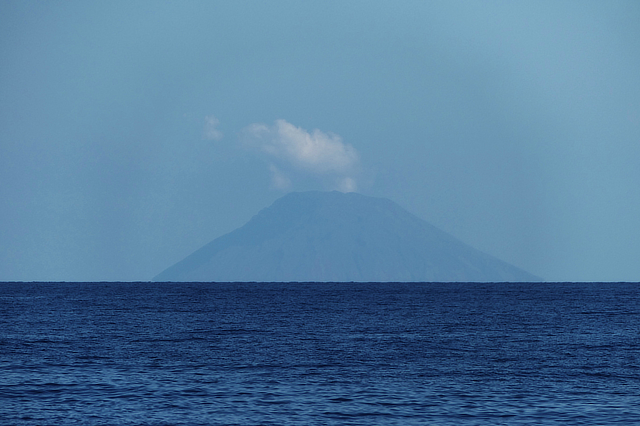
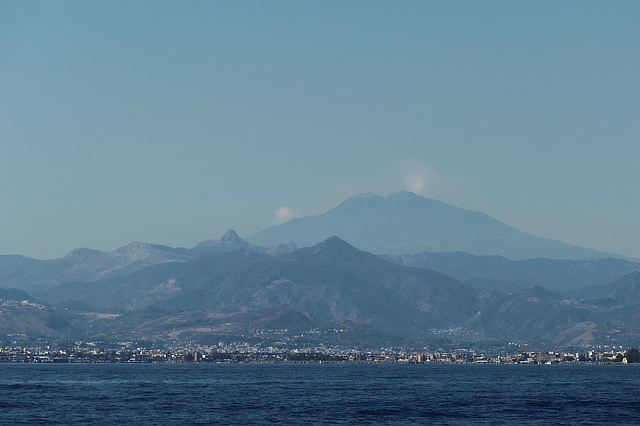
…. and then past Milazzo….
…and onto Tindari.
Milazzo looked lovely but all the anchorages on the east side, and therefore protected from wind, are either rocky or full of Posidonia. Some Posidonia anchorages were in the nature reserve [no anchoring] but others weren’t. We are aware that, if possible, anchoring in Posidonia fields should be avoided as it is really good food for turtles, and for keeping the water clear but, more importantly for us, we avoid it because our anchor does not like it at all. As I have said before, it digs into the underlying roots and just lifts them up – which would leave us dragging.
Tindari is a holiday town within the “Laghetti di Marinello Nature Resrve” in the SW corner of Golfo di Patti.
To stay out of the marked reserve we had to anchor in 16m but, by anchoring “at the back of the pack” instead of trying to squeeze further forward, we had plenty of space to let out sufficient scope for that depth.
Here, and later in the Egadi islands, we began to question what, exactly, the Italians mean by “Nature Reserve”. Reading about the place we expected tranquility and wildlife. As far as we could tell there were no fish, few birds other than gulls and loads of people on the beach, or in fast moving water taxis or small motorboats.
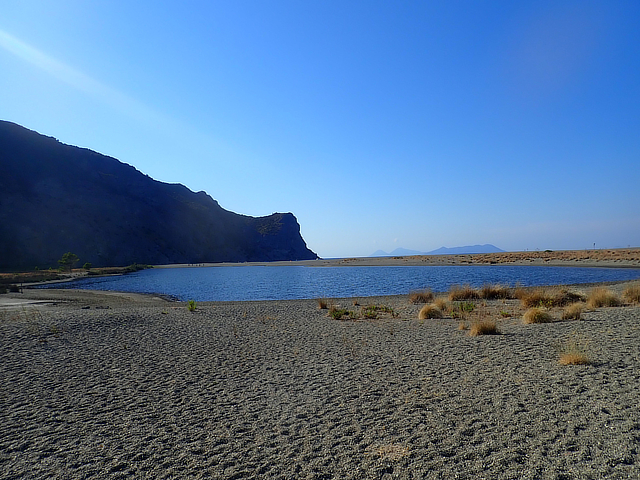
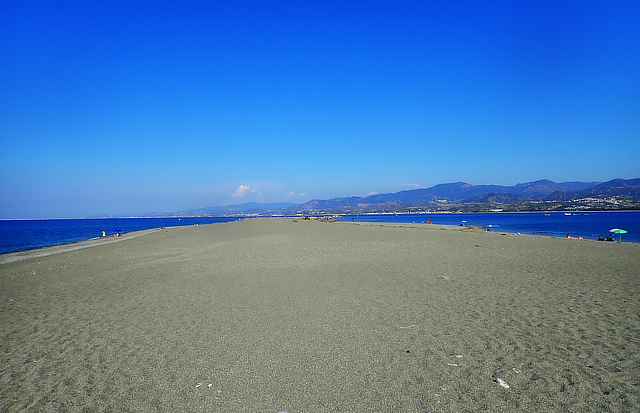
It was also here that we first noticed a very different drinking culture than that in Greece where everyone drinks coffees rather than alcohol in many bars/cafes/tavernas. Here, people were drinking on the beach and there was certainly more alcohol than coffee consumed from midday onwards. Not that we can talk!
Although we didn’t visit, we had a fantastic view of the monastery atop the 255m high cliff.
It apparently contains a miracle working Byzantine Black Madonna to which pilgrims flock from all over Sicily. Talking of which, something else which we found was that at least 90% visitors/holiday-makers were Sicilian/Italian. English wasn’t spoken much by the local people [except in Palermo] and languages other than Italian were seldom heard.
Our next anchorage, Capo d’Orlando was only 16nm from Tindari but we left early to avoid the stronger winds which started mid-morning. We anchored just north and west of the marina and watched a steady stream of boats returning from the Aeolian Islands that evening and heading out two mornings later. It is obviously a charter base and, it would seem, the most popular destination is the Aeolians. There seemed to be far more boats heading that way than we saw there five years ago and, as there aren’t that many good anchorages, it must be quite a bun fight in some places.
Like many of the anchorages we visited, the water was extremely clear, holding was excellent in sand and the depth was just right. What we found on three occasions was that about 300-500metres out there was a shelf when the depth dropped to about 5-7 metres and stayed like that to within 50- 100m of the coastline so anchoring outside the swim balls or the correct 250metres from the shore was not an issue.
We walked round the headland and into the town for a meal on our second evening….
….. but returned quite early to enjoy a spectacular sunset.
A further 36nm and we were at Cefalú.
It is very much a tourist/holiday place….
…. but we really liked it. Lots of narrow streets and small squares…
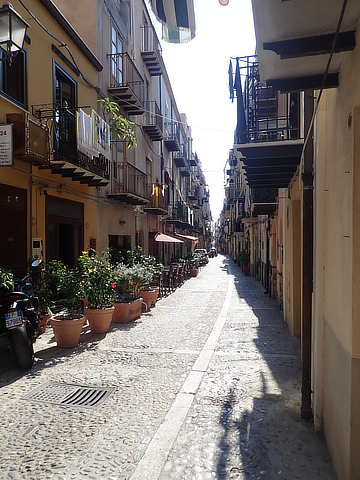
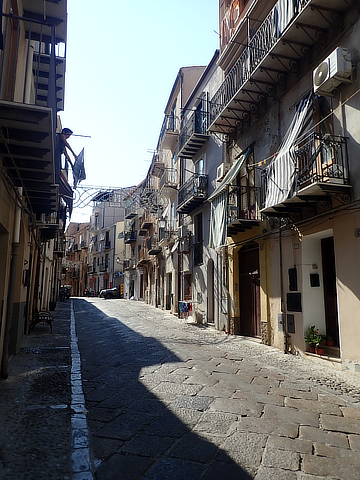
…. pretty churches…
… and an imposing Norman cathedral.
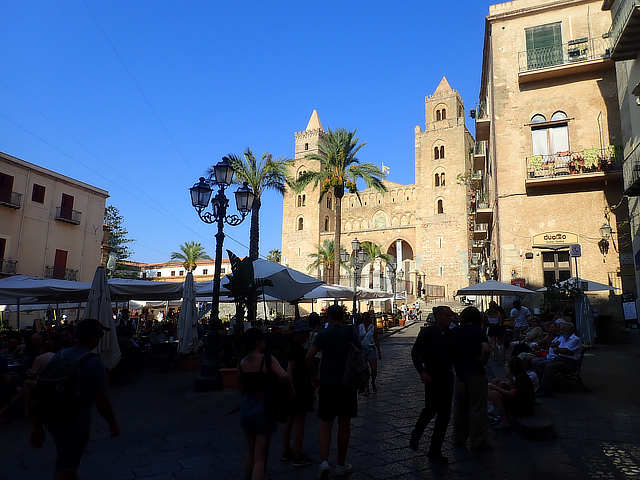
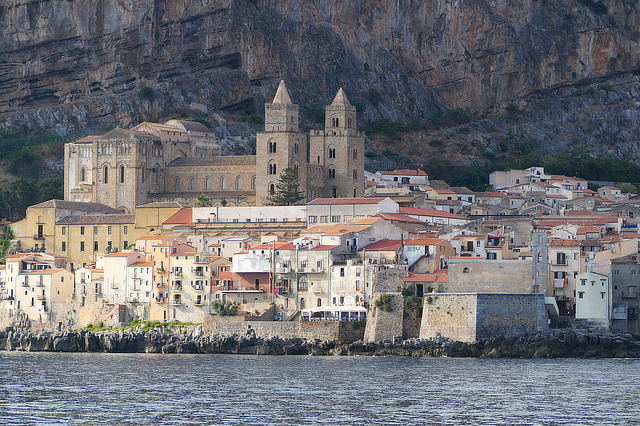
The town is very old and we came across the Medieval washhouse which is at sea level, approximately 4m below street level.
The wide, curved staircase is made of “lumachella” limestone [whatever that is] and the water in the basins is replenished by the sea flowing in through 23 cast iron grids in the old city wall.
Busier during the day, with people on coach tours from other parts of Sicily, meant that the evening was a lovely time to wander round…..
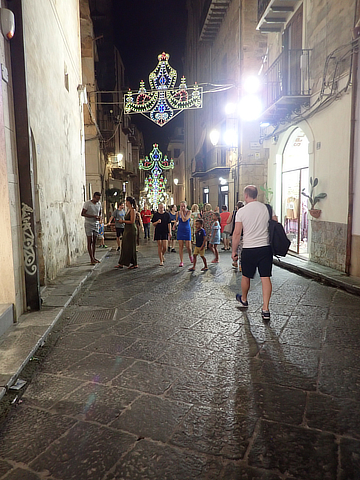
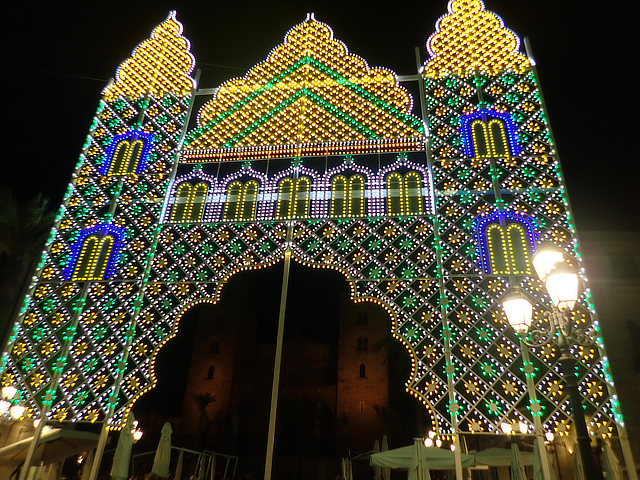
… and by chance, and to Mike’s delight, we also found a real ale pub to get the evening off to a good start.
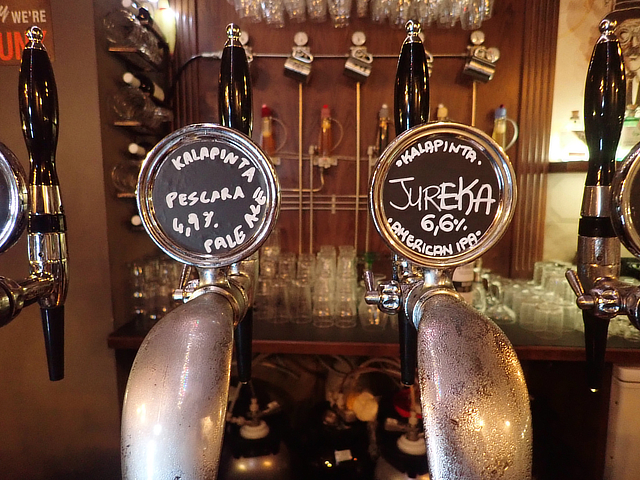
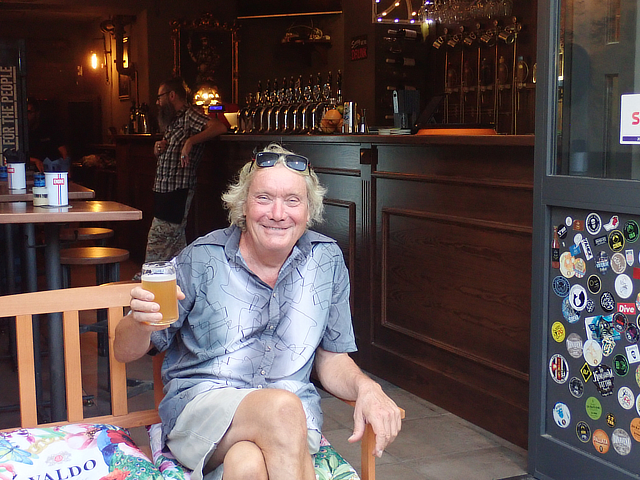
We had booked into a Palermo marina for 2 nights and, wanting to make the most of the two days there we spent the night before anchored at Arenella – 2.5 nm north of Palermo harbour. This meant that we arrived at “Salpancore marina” at 10.00 – the earliest time given for arrivals. Giovanni, the owner, was really helpful and gave us tips and directions for best seeing the city. At check in he contacted the immigration police who, because we had Greek residence cards, said we didn’t need to have our passports stamped. Result!
Just after checking in we got a thunderstorm but, fortunately, it was short lived and for the rest of our time in Palermo it remained dry and mainly sunny.
Founded by the Phoenicians, Palermo became an important Carthaginian stronghold and was then conquered by the Romans in 254BC. From 831AD to 1072AD it was the centre of Arab civilisation in Sicily and, much later the Normans, followed by the Aragons and the Bourbons who also left their influence. It was finally liberated by Garibaldi in 1860.
So, lots of history reflected in many of the buildings and monuments.
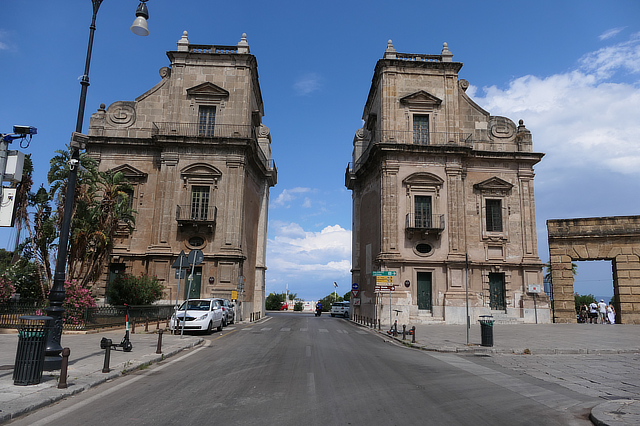
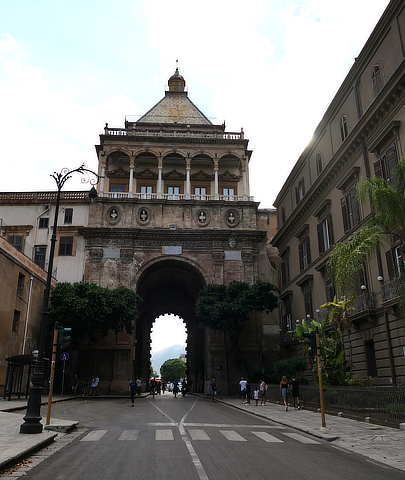
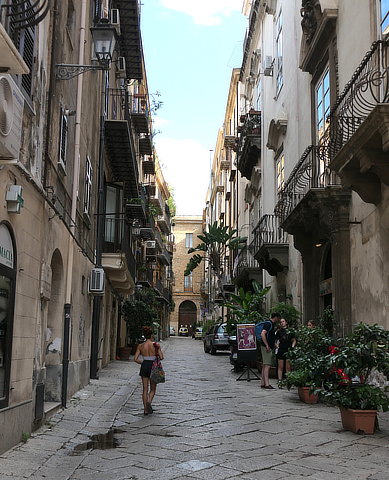
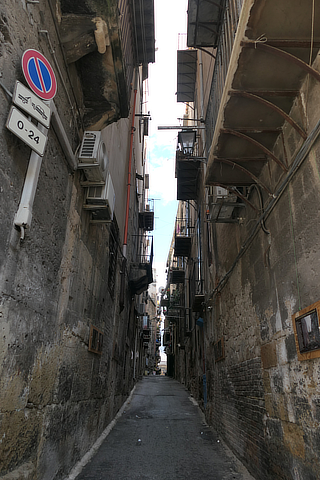
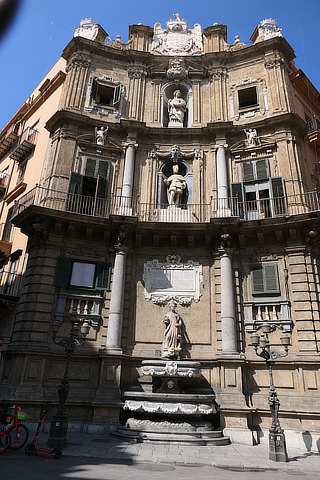
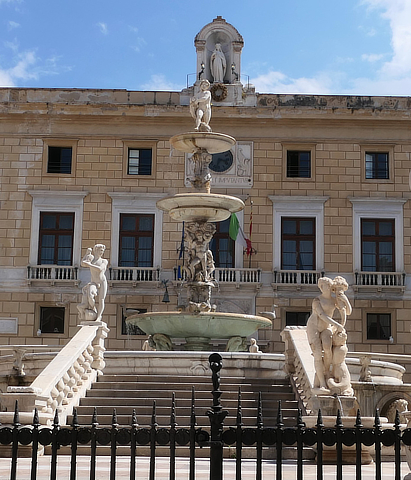
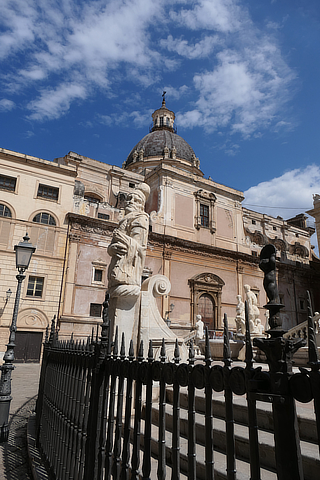
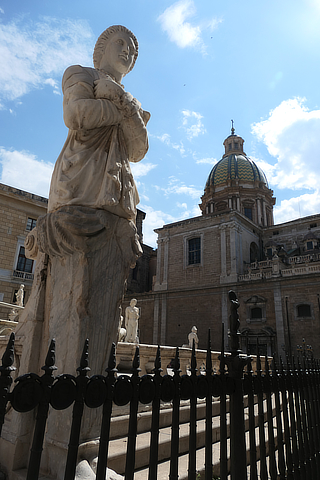
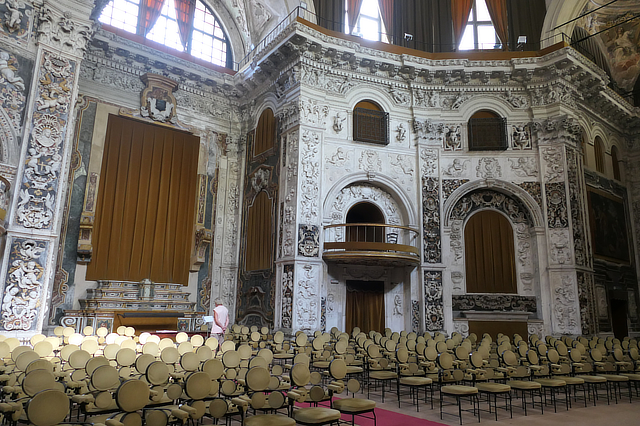
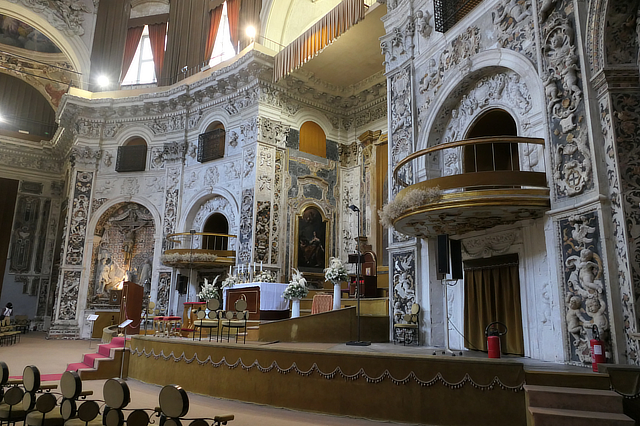
Heavily bombed in 1943 the Baroque church lost its dome and was abandoned. It was transformed into an auditorium in 1960 it now plays a dual function as the ecclesiastical use has also been reinstated.
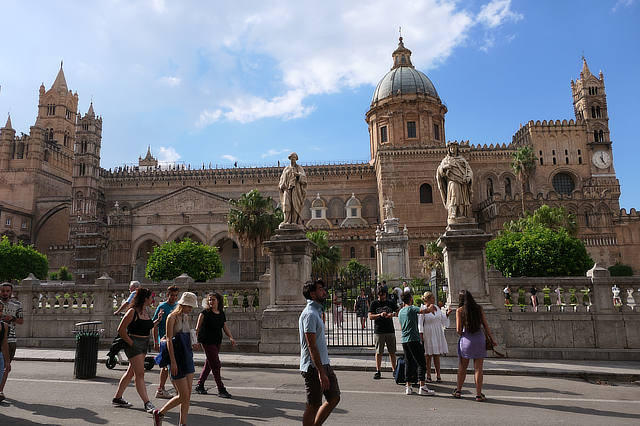
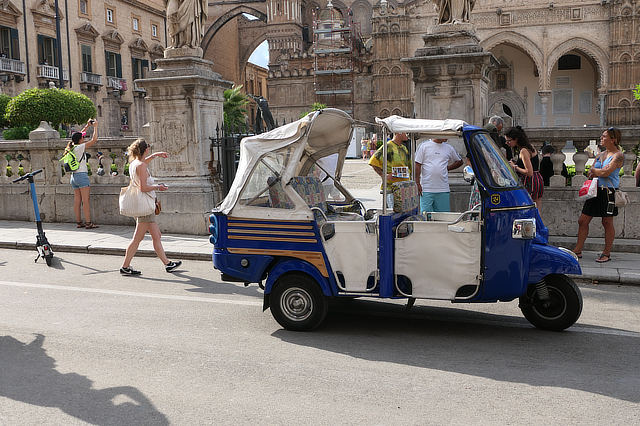
Think Sicily, think Mafia? Well, there is certainly a lot of Mafia history as well in Palermo and we went to a “No Mafia” exhibition….
…..which detailed many of the murders committed – mainly by car bomb or ambush of cars in the street whose passengers were then shot. Incorruptible Police Commissioners, Judges and Prosecutors dedicated to eradicating Mafia activity were a popular target. A mural on a wall near to the harbour depicts Giovanni Falcone [left] and his good friend and fellow prosecuting magistrate Paolo Borsellino who were both killed in 1992 after distinguished careers culminating in the “Maxi trial”.
The trial lasted six years and was held in a bunker type courthouse built specially for it within Ucciadone prison. 475 mafiosi were indicted, 338 sentenced to a total of 2,665 years and a further 19 “bosses” each sentenced to life imprisonment.
The Botanic Gardens had been recommended to us but they are huge and, with everything else to see we unfortunately didn’t have time to go there. We made do, instead, with Villa Giulia park.
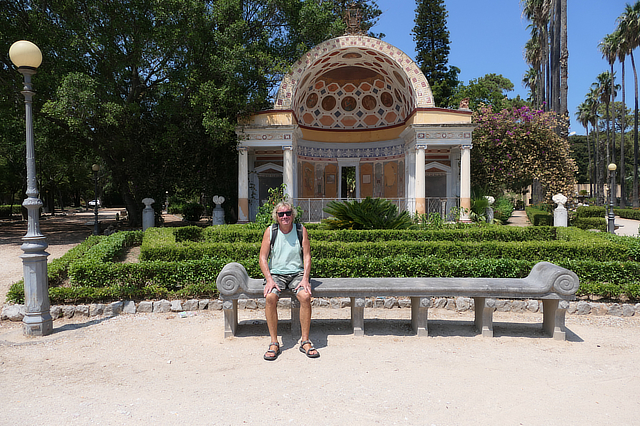
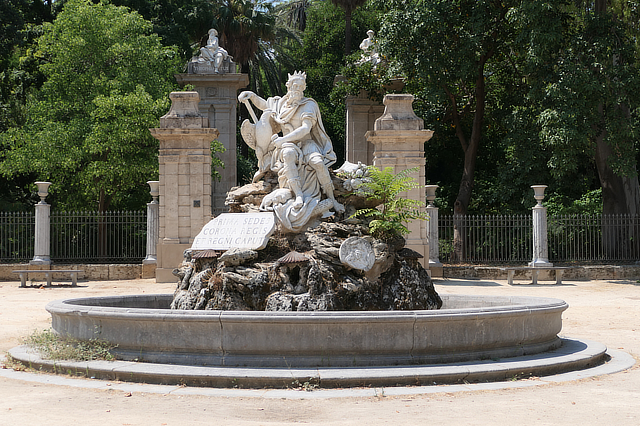
This symbol of Scicily comes from Greek mythology. It is the head of a Medusa, a Gorgon, with serpents entwined in her hair and ears of wheat. It apparently stems from the fact that Athena, protectress of Sicily, had the Medusa on her shield.
As always, we love to visit markets and the street markets in Palermo were no exception – by day….
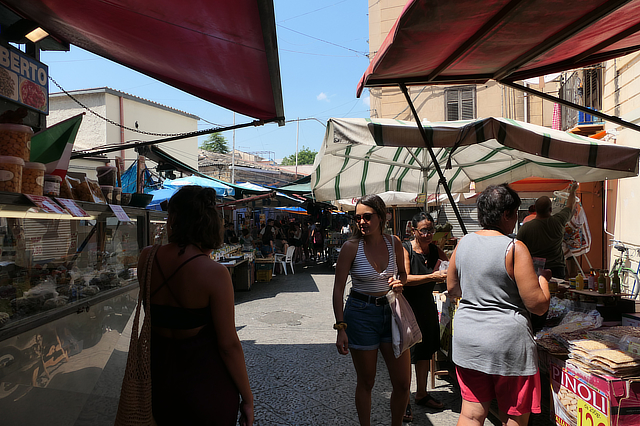
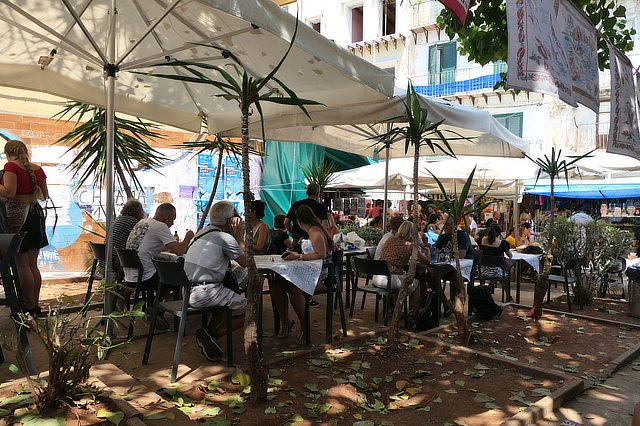
….and night.
….and a visit to the Petit Jazz bar set the scene for our first evening.
When we were due to leave, because winds were forecast to be NW for the next two days and then go NE we just went back to Arenella and waited. However, the wind did not go NE – surprise, surprise – so, because we needed to be in Trapani on the third night we battled the north and west winds for 23 miles until it finally shifted sufficiently for us to put out the genoa for the rest of the passage [a further 30 nm].
The reason we needed to be in Trapani was because we had booked a one week pass for the Egadi Islands which lie just to the west of the port. Booking was quite amusing because having gone to the “bookings for non-residents” section we were then asked for our tax number – our “Italian” tax number!? An Italian tax code for non-residents of Italy! Huh. Well, believe it or not, we actually both have one because we had to get them when we bought Owl and Pussycat in Livorno. Not sure what we would have done otherwise and it might explain why all the other boats on mooring balls were Italian.
We now come back to the questions: “What constitutes a national park” and “what are the rules within them”. The website – and everything else we read- suggested that anchoring was forbidden and that mooring balls must be used. So, hoping the “early boat catches the ball” we set off at 07.50 for the 9nm crossing. We actually had a brilliant sail and arrived at Favignana NE anchorage at 9.15 to this…..
The very front boats were actually on sand – so we were lucky and found a space and joined them until a mooring ball became free at 15.30. Different Park Wardens seemed to have different rules. We stayed there four nights and some nights all the boats in the bay that weren’t on one of the eight balls were told to anchor further out in about 20metres on sand but on other nights they were allowed to stay. So, having paid E150 for a seven night pass we found we probably didn’t really need one. However, we were actually happier on a ball than anchored out in 20metres particularly as there was quite a strong southerly wind which created waves the further out of the bay you were.
As for wildlife, once again it was pretty scarce though we did get a surprising “fly past”.
As I said, we spent four days/nights there. Dinghy landing was practically impossible as the whole bay is surrounded by sharp rocks. One day we took the dinghy up the coast and found a small boats “harbour” ….
……which enabled us to walk to the town of Favignana.
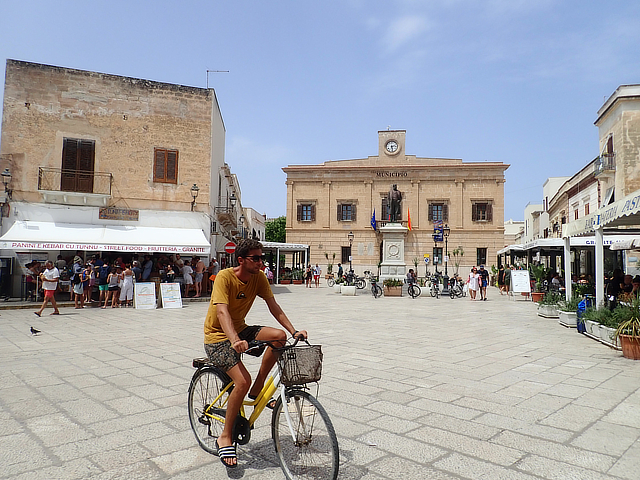
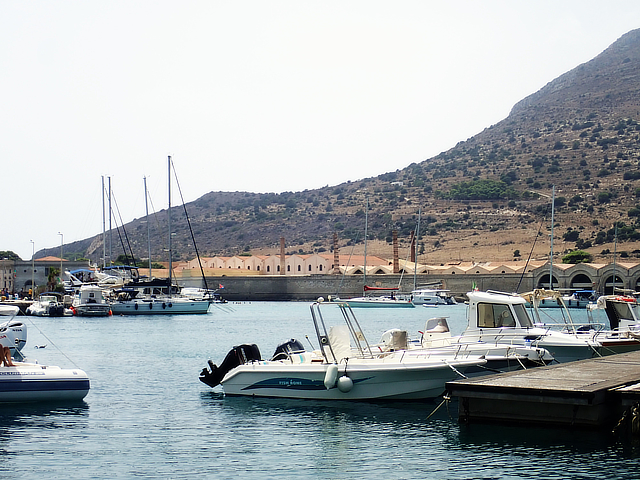
About 120-130 years ago the island was bought by a Palermo entrepreneur called Ignazio Flario who turned the town into the centre of the Tuna canning industry. The factories and warehouses now lie empty and the main source of income for the island is tourism.
On another day we braved the rocks on the east side of the bay and found a spot we could drop the dinghy anchor from the stern and tie the bow to a rock outcrop and swim ashore. We then did a circular walk and saw some interesting landscaping…..
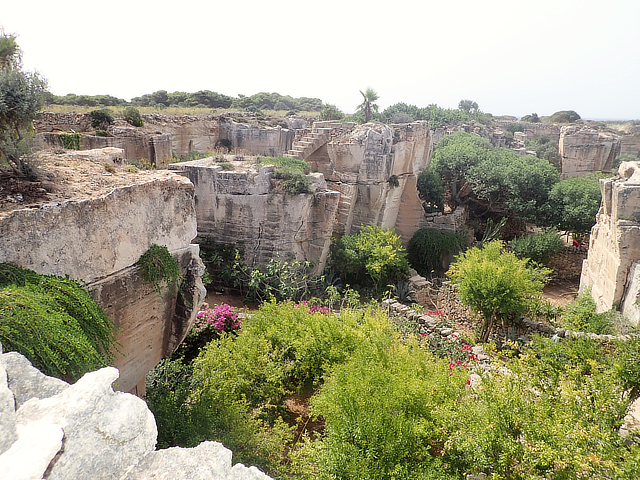
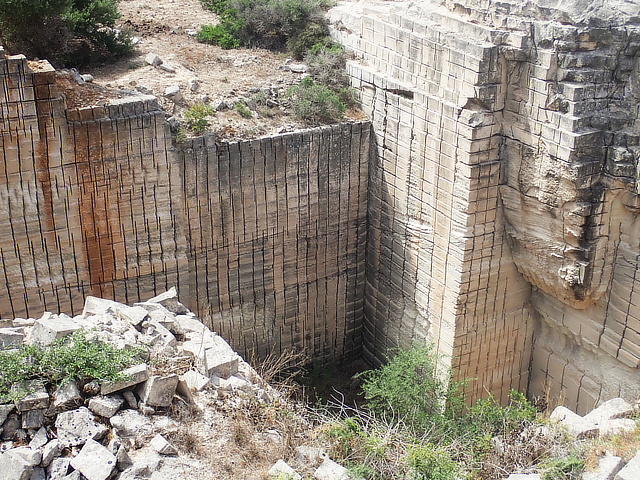
…. and a lovely view
On the fourth day we knew that the wind was going to shift overnight from strong SE to strong NW so we debated whether to cross to Levanzo at dusk that night or early the following morning. As Mike pointed out, if we didn’t like what we saw when we got there or there were no balls available we would have had to sail to Trapani in the dark but if we went early morning and didn’t like it we would have daylight for an onward passage.
The slapping of waves woke us at 05.15 and, like a couple of other boats, we decided to make our move. 21NW on the beam sounds OK but the waves were awful and we had an uncomfortable crossing – but at least it was only 1hour 15minutes and Cala Fredda was well sheltered so we found ourselves moored with just 8kn wind. We had the choice of 4 of the 8 balls – two hours later [08.45] all were taken so we were glad of our early start.
Of the two islands we preferred this one. It would have been nice on both islands to sample more than one anchorage but weather always dictates.
The village is small and very attractive…
…. and it had a brilliant bakery which came as quite a surprise as bakeries were generally hard to come by. Most of the bread we bought in Sicily was from a supermarket. Something else that was scarce throughout the islands were rubbish bins. It was understandable in the Egadi islands because they probably wanted people to take their rubbish back to Sicily but, even there, bins were either well hidden or, seemingly non-existent.
Anyway we enjoyed our stay at Levanzo even though a walk one evening wasn’t exactly Mikes cup of tea. His problem with heights was challenged by the stroll to Cala Faraglione….
…. but equilibrium was restored ……
On 23rd August we returned to Trapani which is a wonderful harbour anchorage.
We went ashore to provision for our onward journey and just had to sample some local wine…
Whilst sipping, we were given a slice of pizza as a snack. It was so good we decided to have takeaway pizza and the wine bar owner was more than happy to point us to the pizzeria he used. It was nice to have decent pizza. Sicilian pizza is, with the exception of this Trapani one, of the thick flabby crust type – not good for people like us who like thin and crispy!
It was a fitting way to end our stay in Sicily/Italy. It won’t actually rank as one of my favourite places but it was well worth visiting and we are glad that we went.

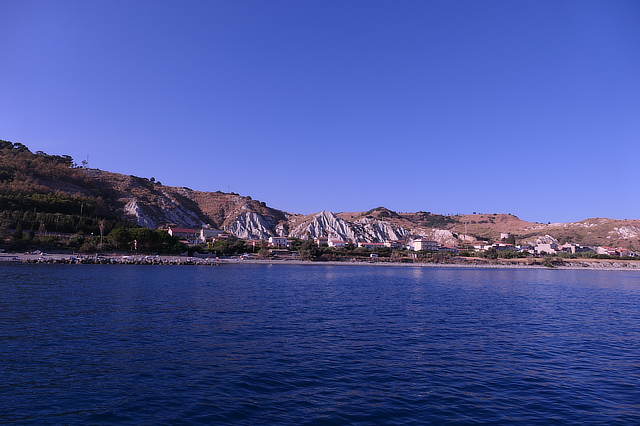
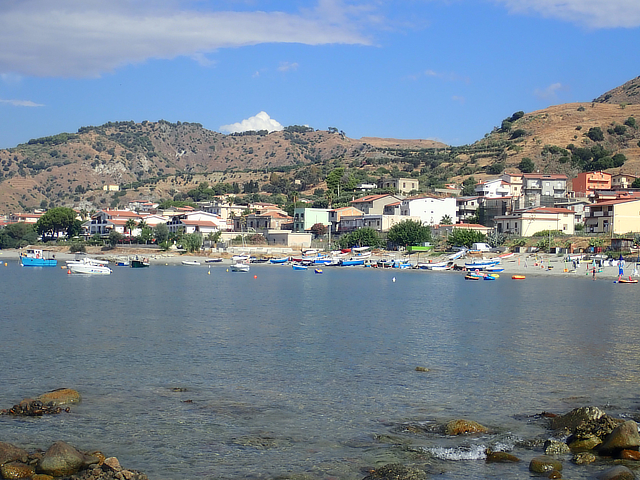
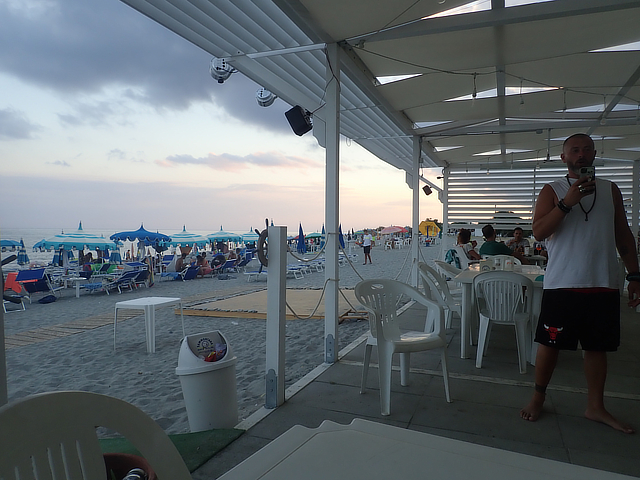
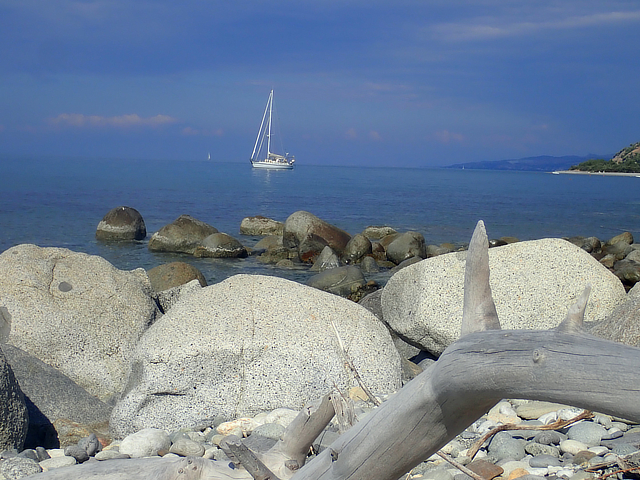
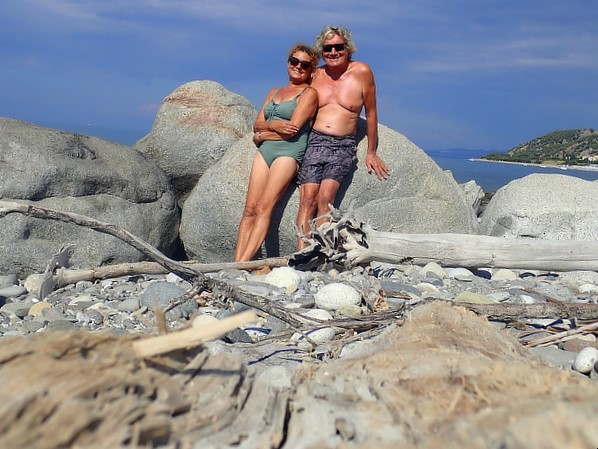
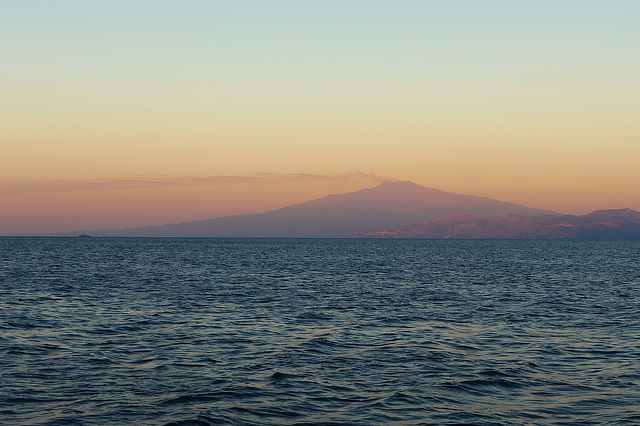
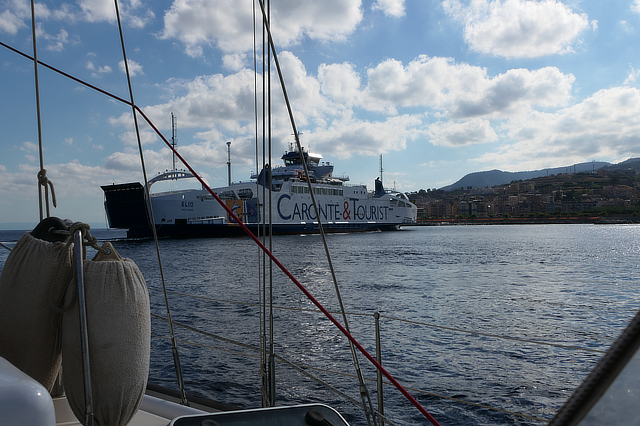
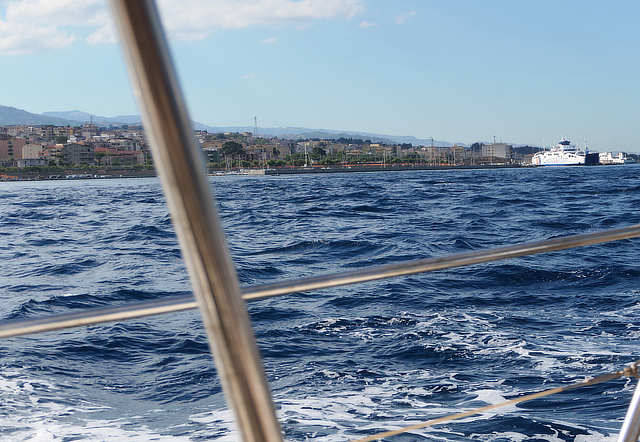
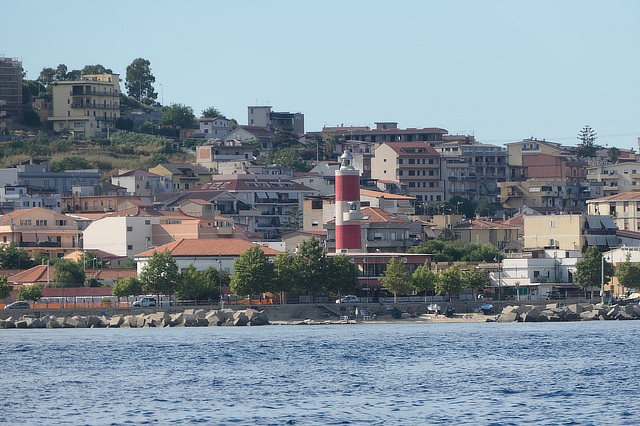

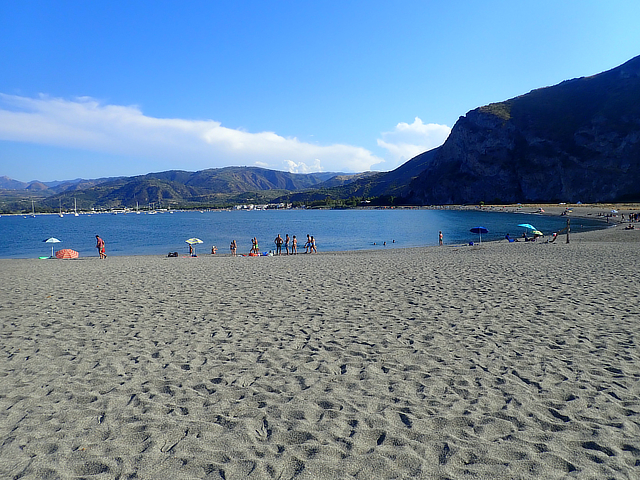
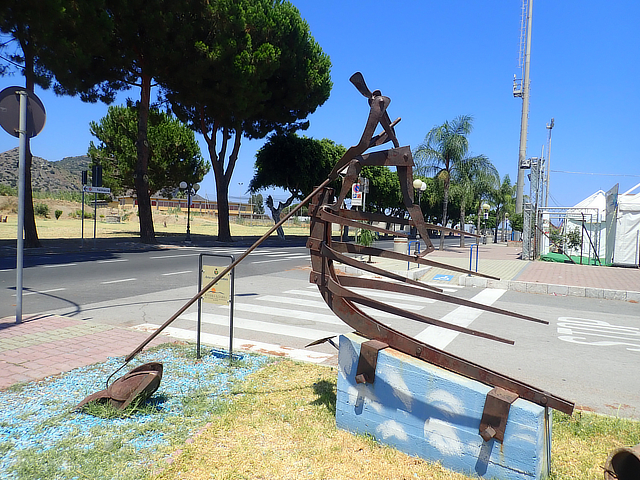
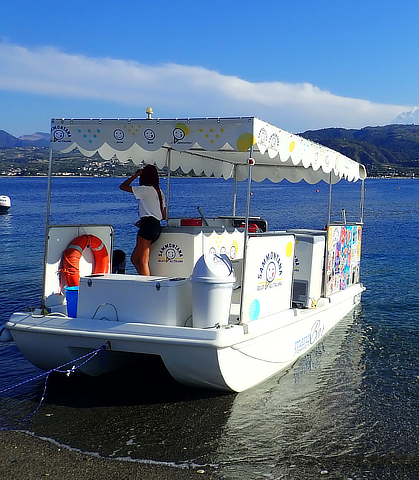
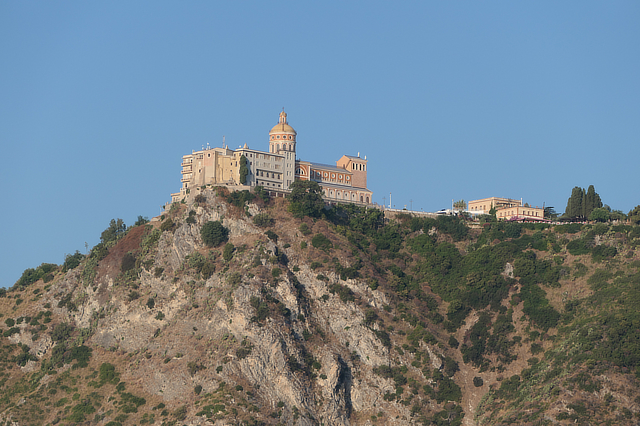
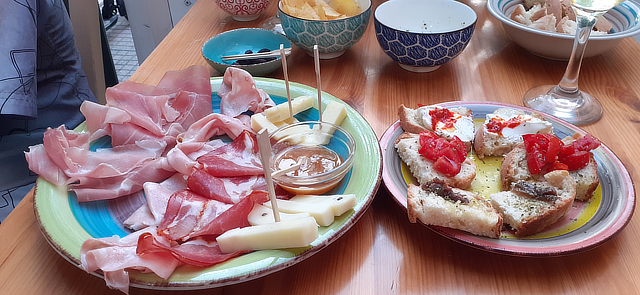
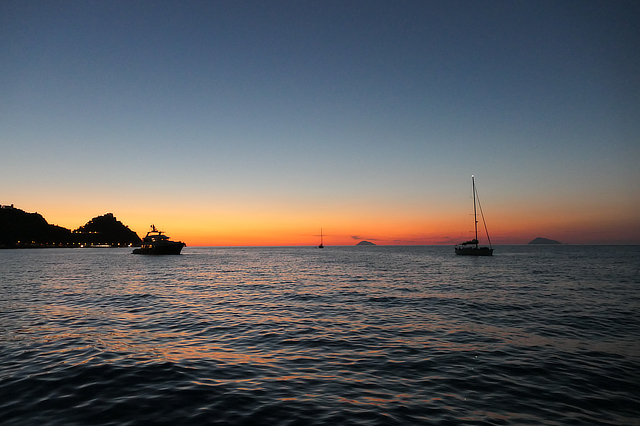
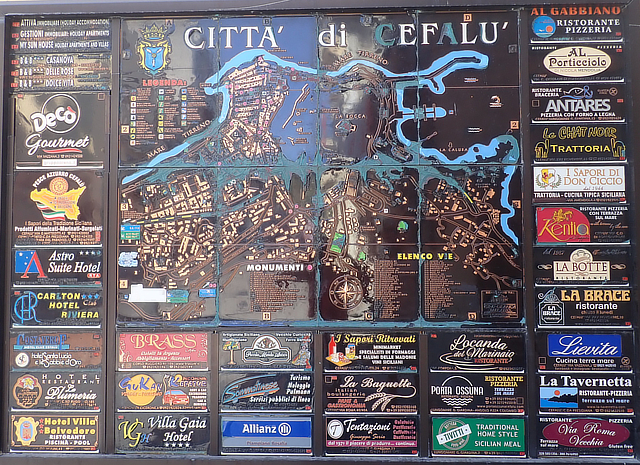
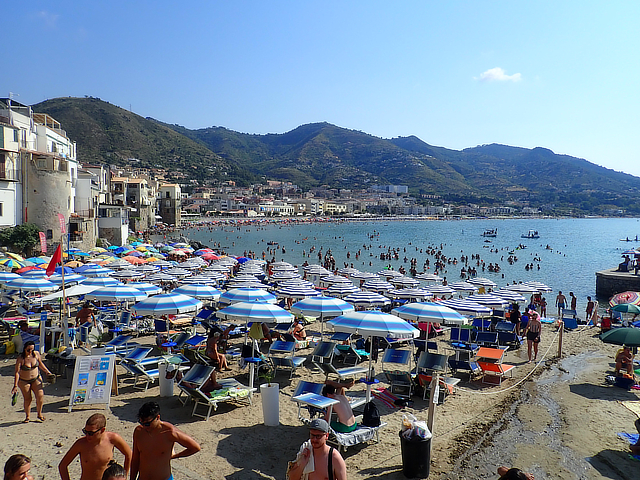
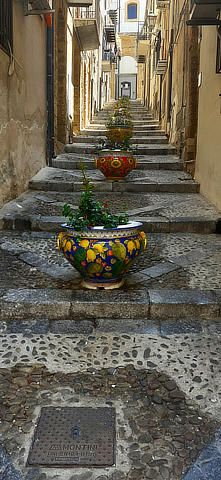
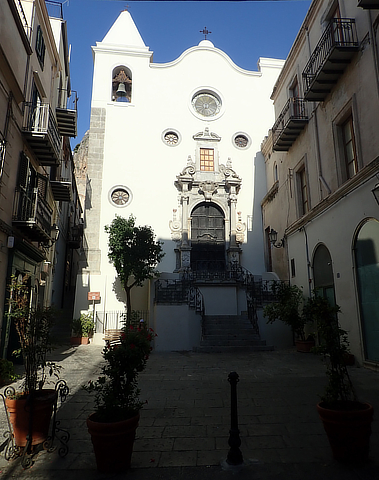
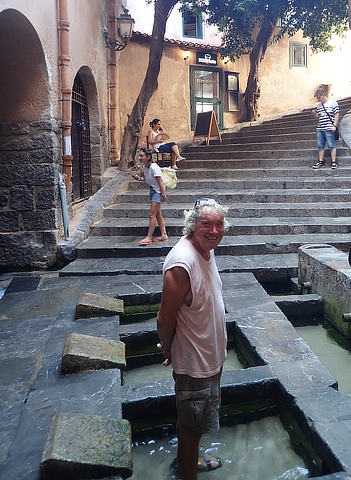
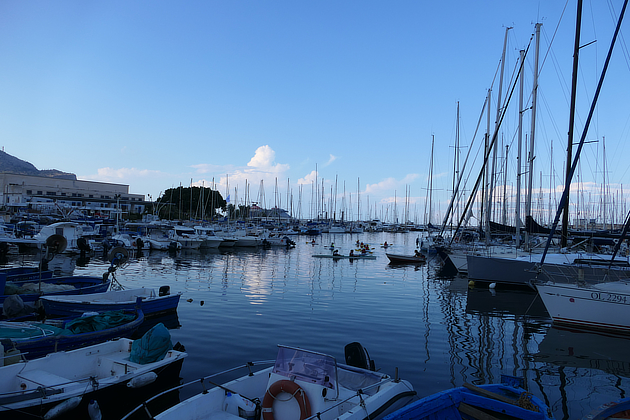
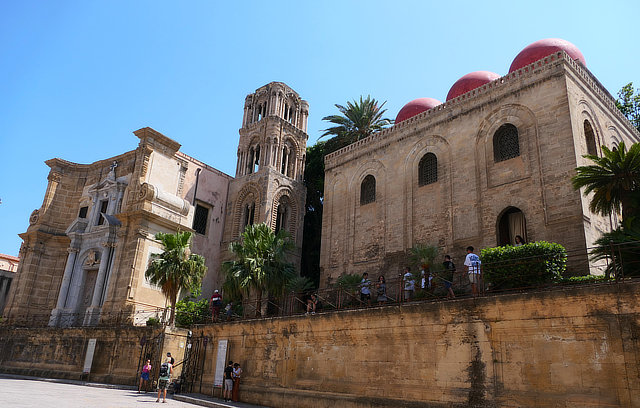
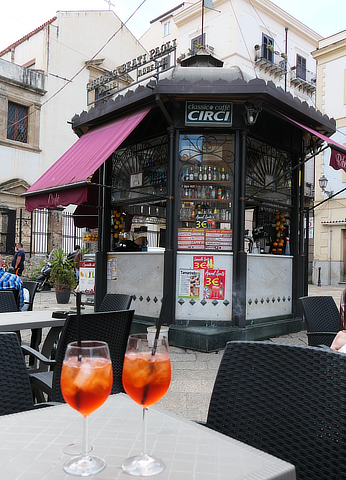
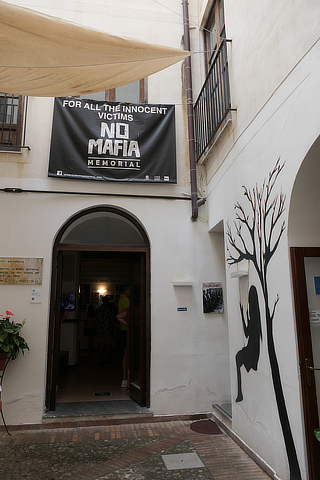
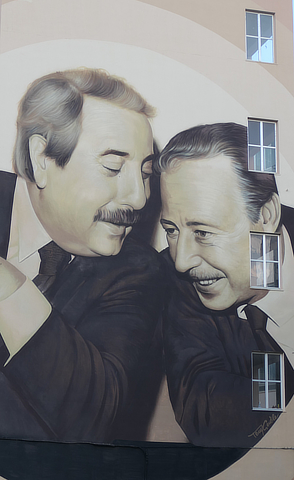
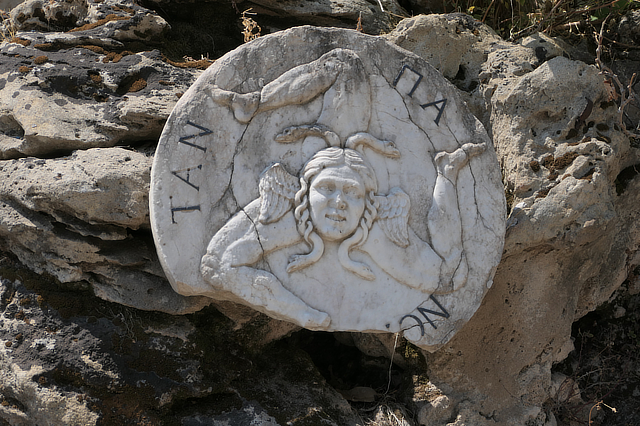
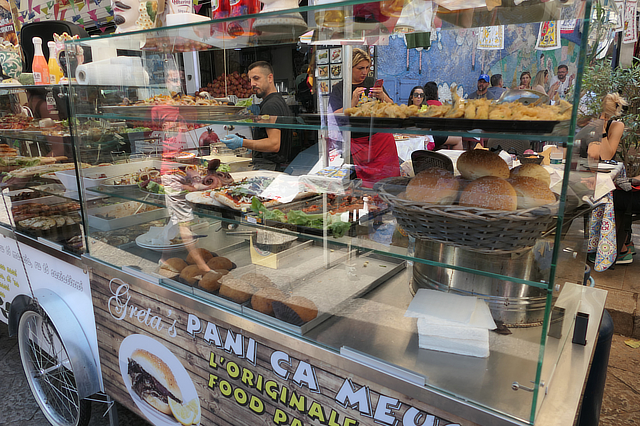
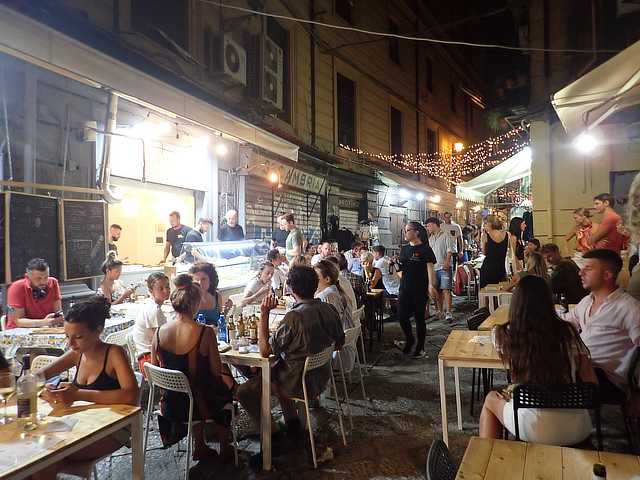
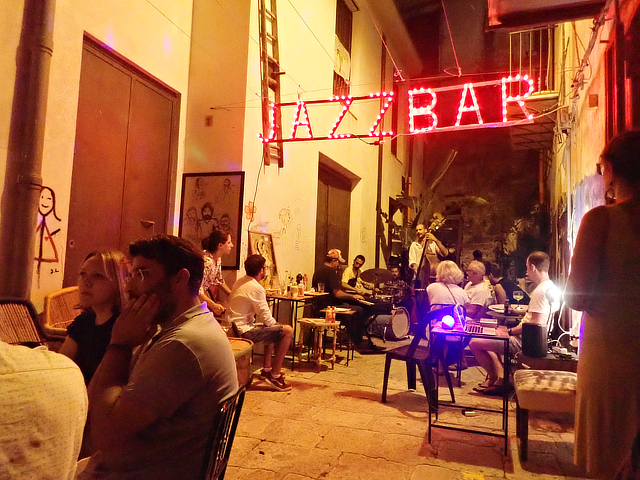

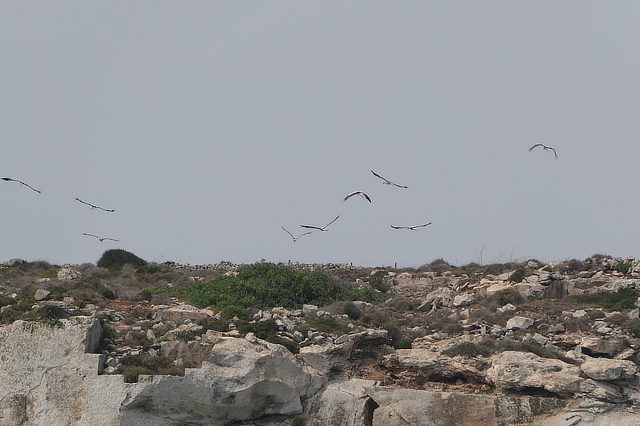
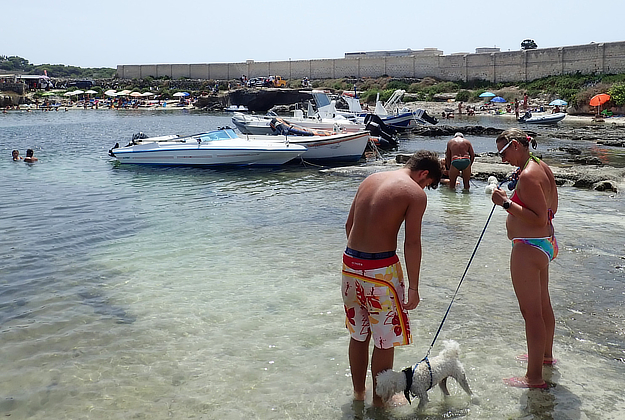
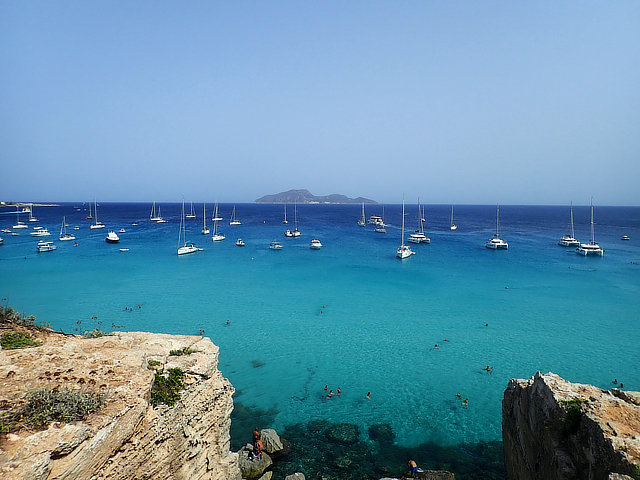
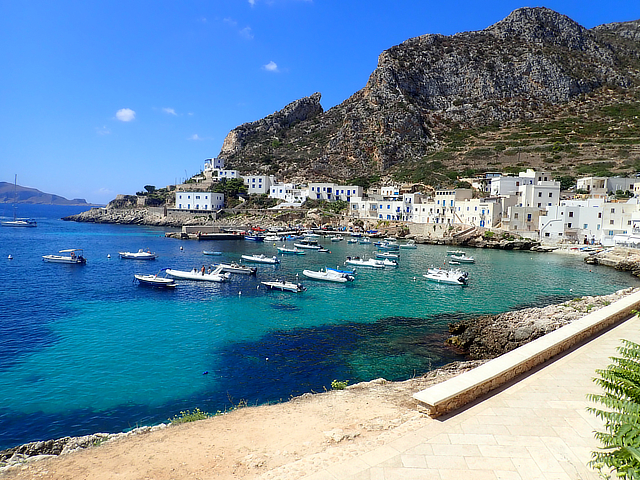
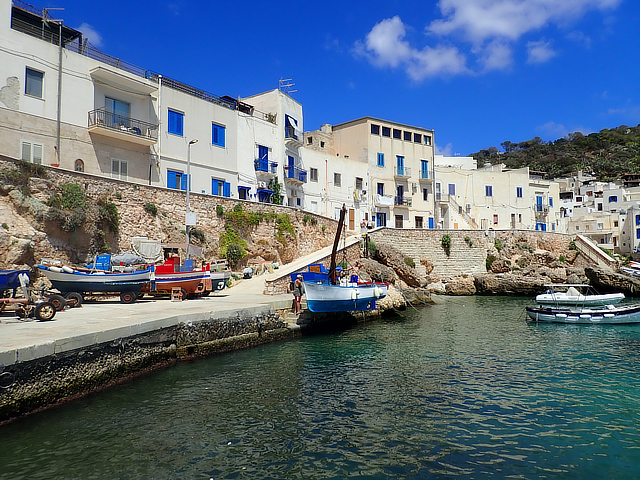
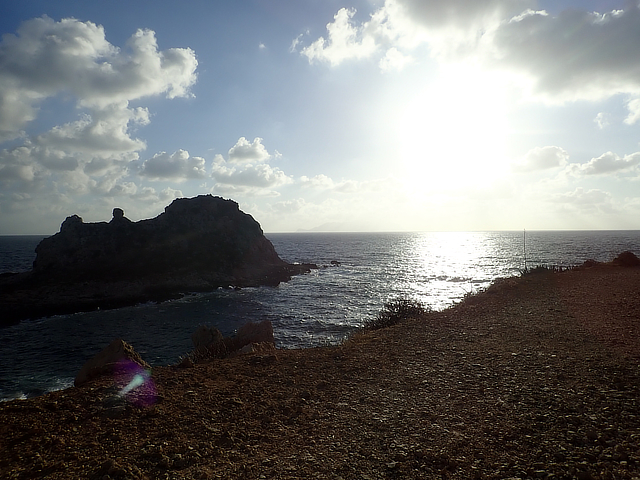
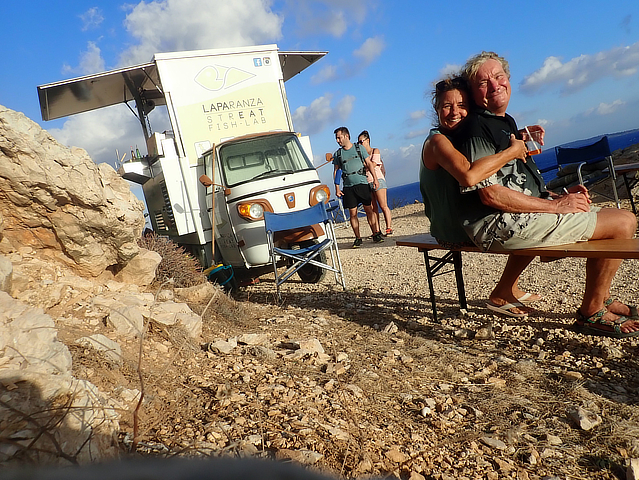
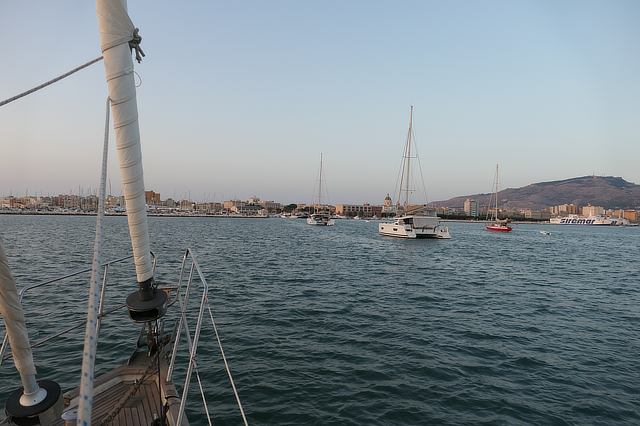
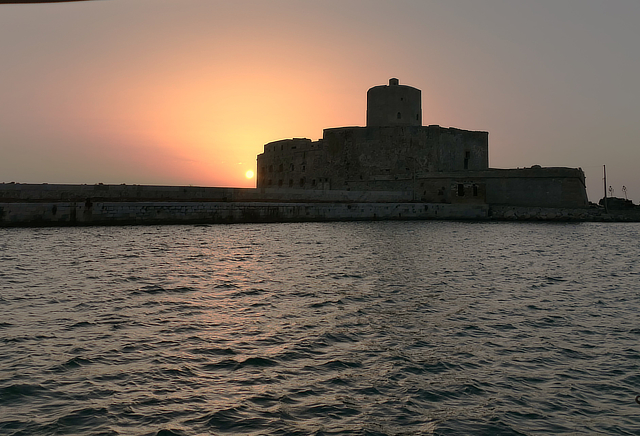
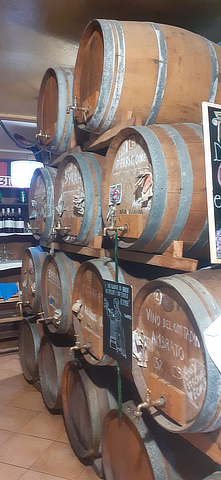
1 comment
And the journey continues……. I got you last FB link.
So to the canaries and beyond x